Native American Music
The Classical Period
Alonzo Chappel, Public domain, via Wikimedia Commons
One of the major theaters of the Seven Years' War was in North America. France had two major North American colonies: Canada, located in the north along the Saint Lawrence River, and Louisiana, located along the Mississippi River Valley. Together, these were called New France, and were theoretically a single unit connected by the Ohio River Valley in the middle. Ohio, however, was also a prime target for settlment by colonists from Britain's thirteen smaller colonies along the Atlantic Coast: Massachusetts, New Hampshire, Rhode Island, Connecticut, New York, New Jersey, Pennsylvania, Delaware, Maryland, Virginia, North Carolina, South Carolina, and Georgia.
Many Native American peoples became involved in the war. The majority, including the Shawnee, Delaware, Ottawa, Hurons, Algonquins, and Wabanaki, sided with the French. The French colonists, primarily missionaries and fur traders, tended to treat the indigenous populations as allies and commercial partners, maintaining a laissez-faire approach toward coexistence. The French population in North America, however, was dwarfed twenty-to-one by the number of British colonists, who were already driving Native Americans westward out of their ancestral lands.
Some, however, sided with the British. In particular, an alliance of tribes called the Iroquois Confederacy was internally divided. Most members had close ties to the British, but some groups in Canada had converted to Catholicism and sided with the French. The Confederacy officially remained neutral, trying to play both sides off each other.

Although the Bronze Age technologies of smelting and alloying had been discovered by the Inca, Mayan, and Aztec civilizations encountered by the Spanish, they were unknown to the North American indigenous peoples encountered by the early British and French settlers. As a result, their instruments tended to be similar to Neolithic period instruments made of readily available materials such as bone, wood, plant matter, and animal skins. Though varied in culture, many musical similarities exist across Native American groups, including the use of drums, rattles, shakers, call-and-response technique, and ritual dancing.
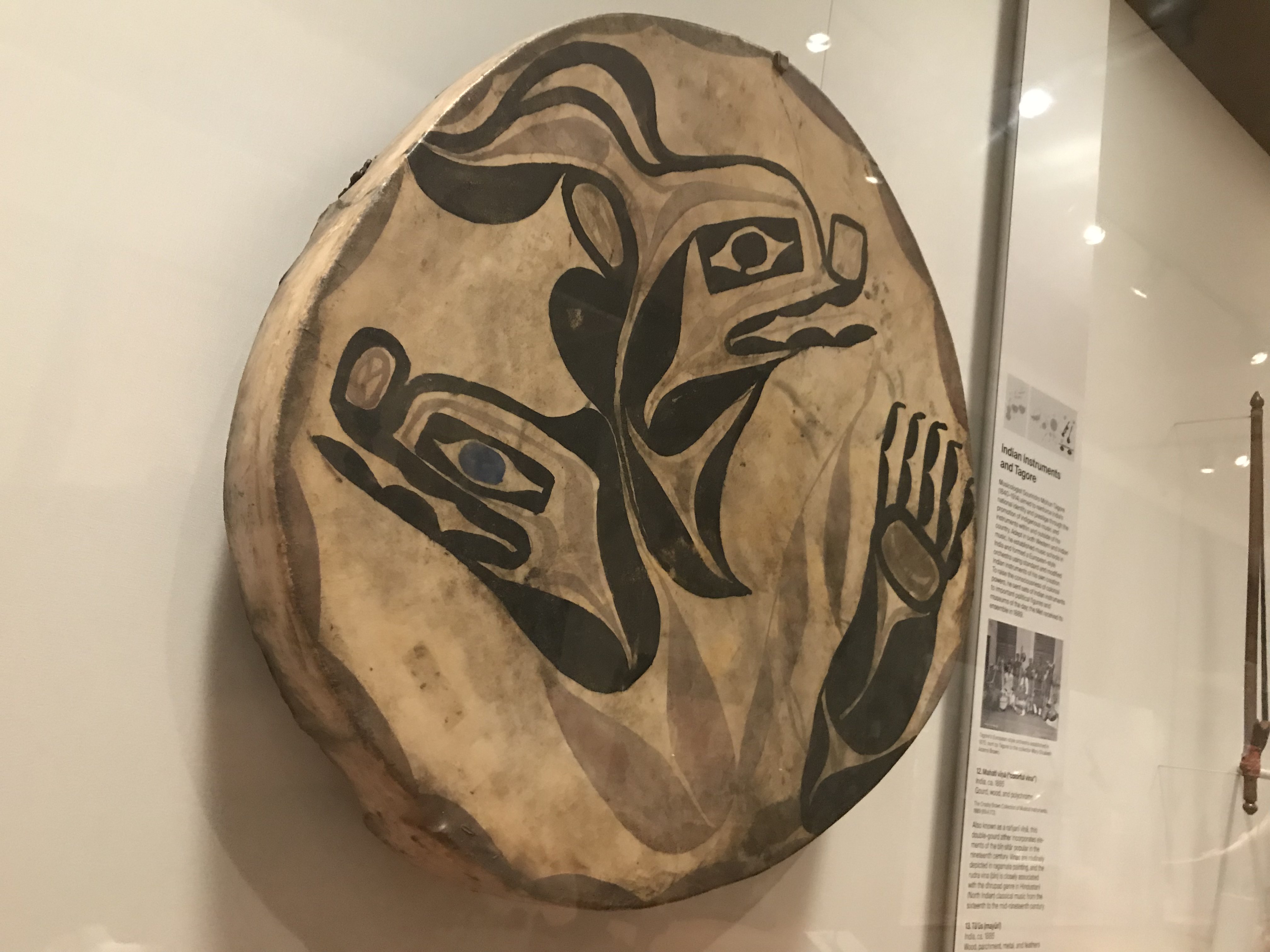
Cauyuk
This Skidegate frame drum is made from red cedar and hide, both abundant in the northwestern United States and western Canada.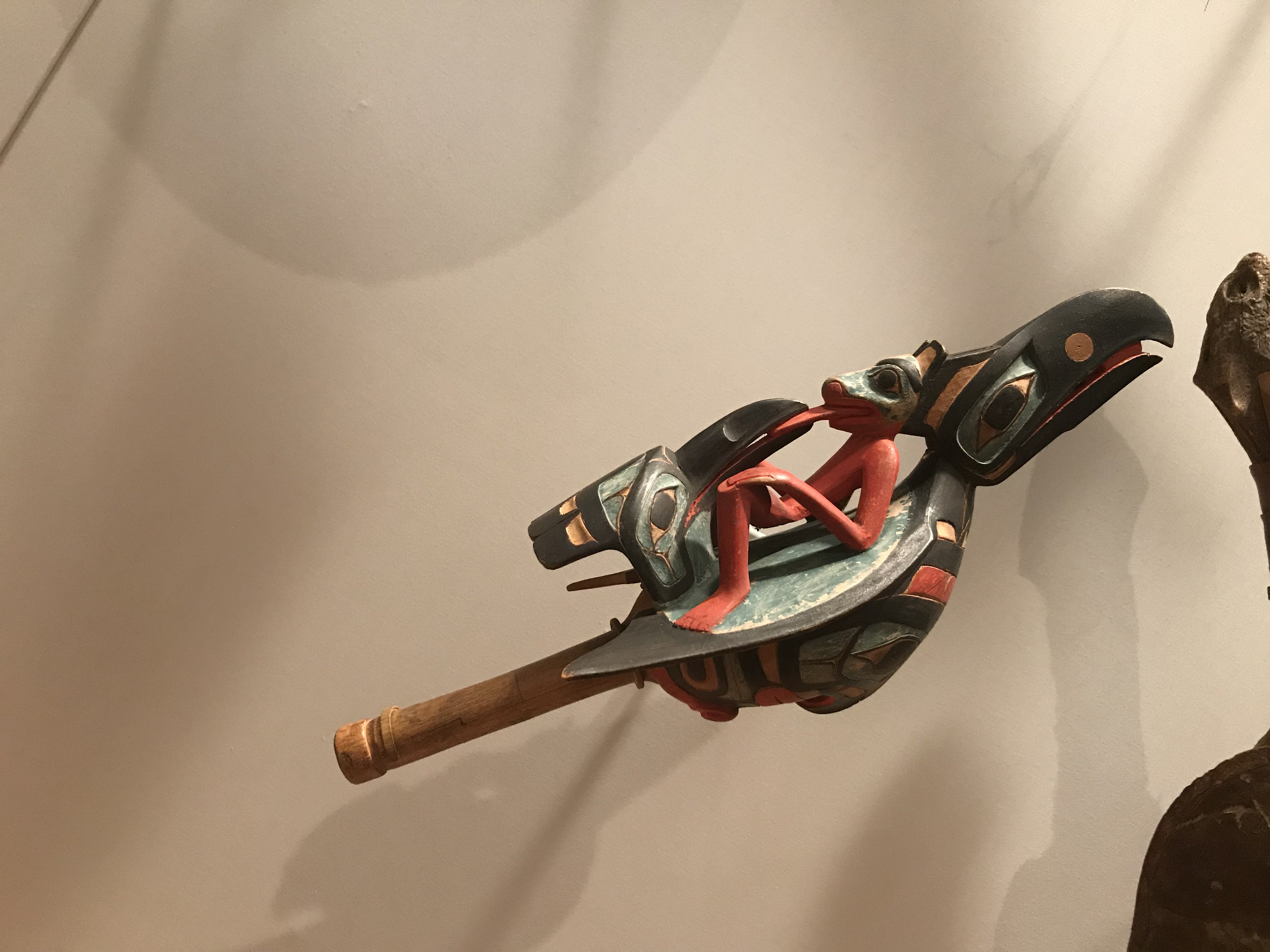
Raven Rattle
This elaborately decorated rattle is made by the Tsimshian people of western Canada. It is filled with seeds or small stones and was traditionally used for shamanic healing rituals.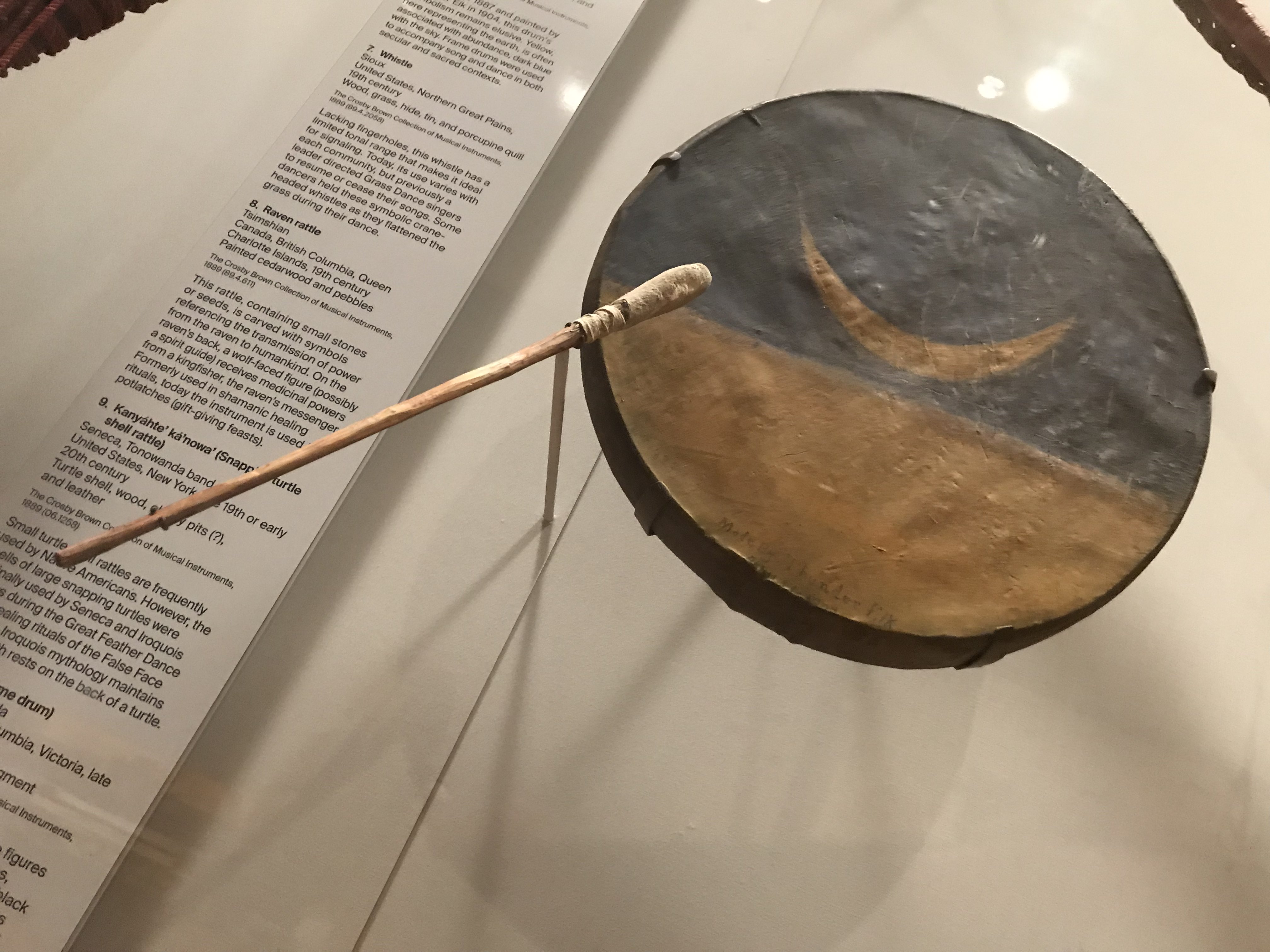
Hoop Rattle
A basic Sioux wood-and-skin rattle filled with beans or other small items to create a rattling sound.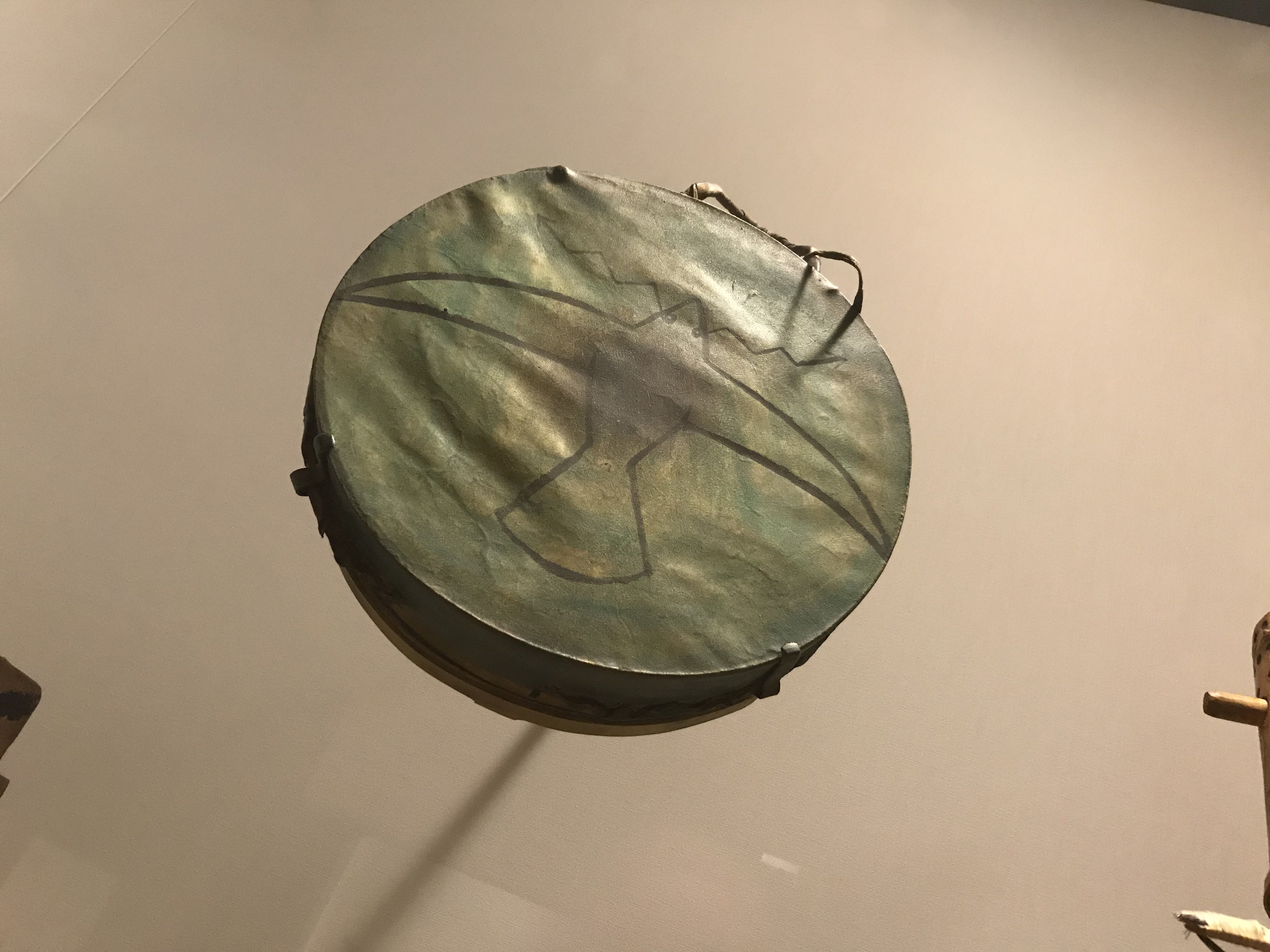
Wakan-chan-cha-gha
The wakan-chan-cha-gha is a Sioux frame drum from the Great Plains. Drums were often decorated with figures of animals and other culturally significant symbols.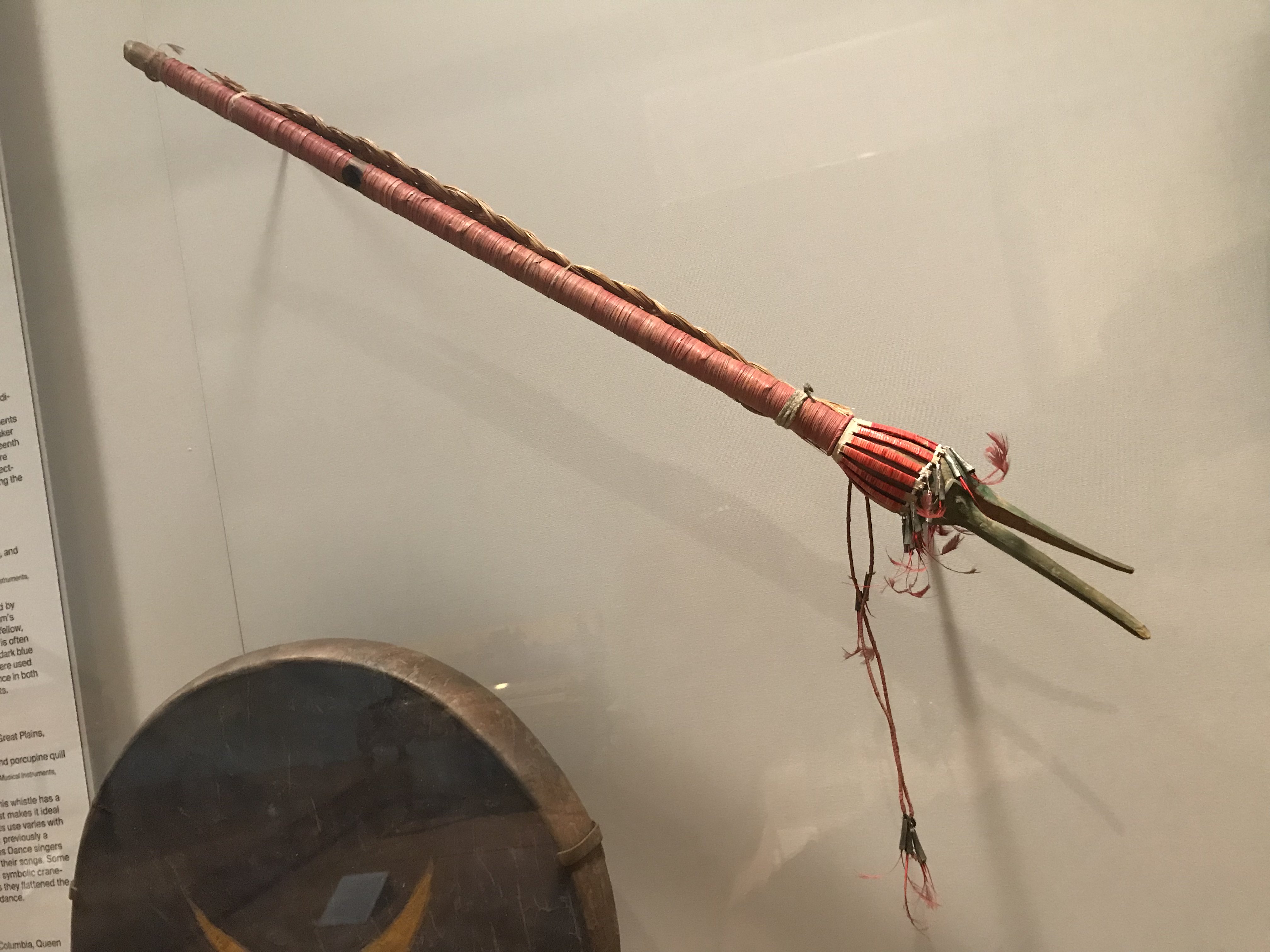
Whistle
This Sioux whistle is constructed similarly to a flute, but with no finger holes, giving it a limited tonal range. It was used for simple signaling, possibly to begin and end dance rituals.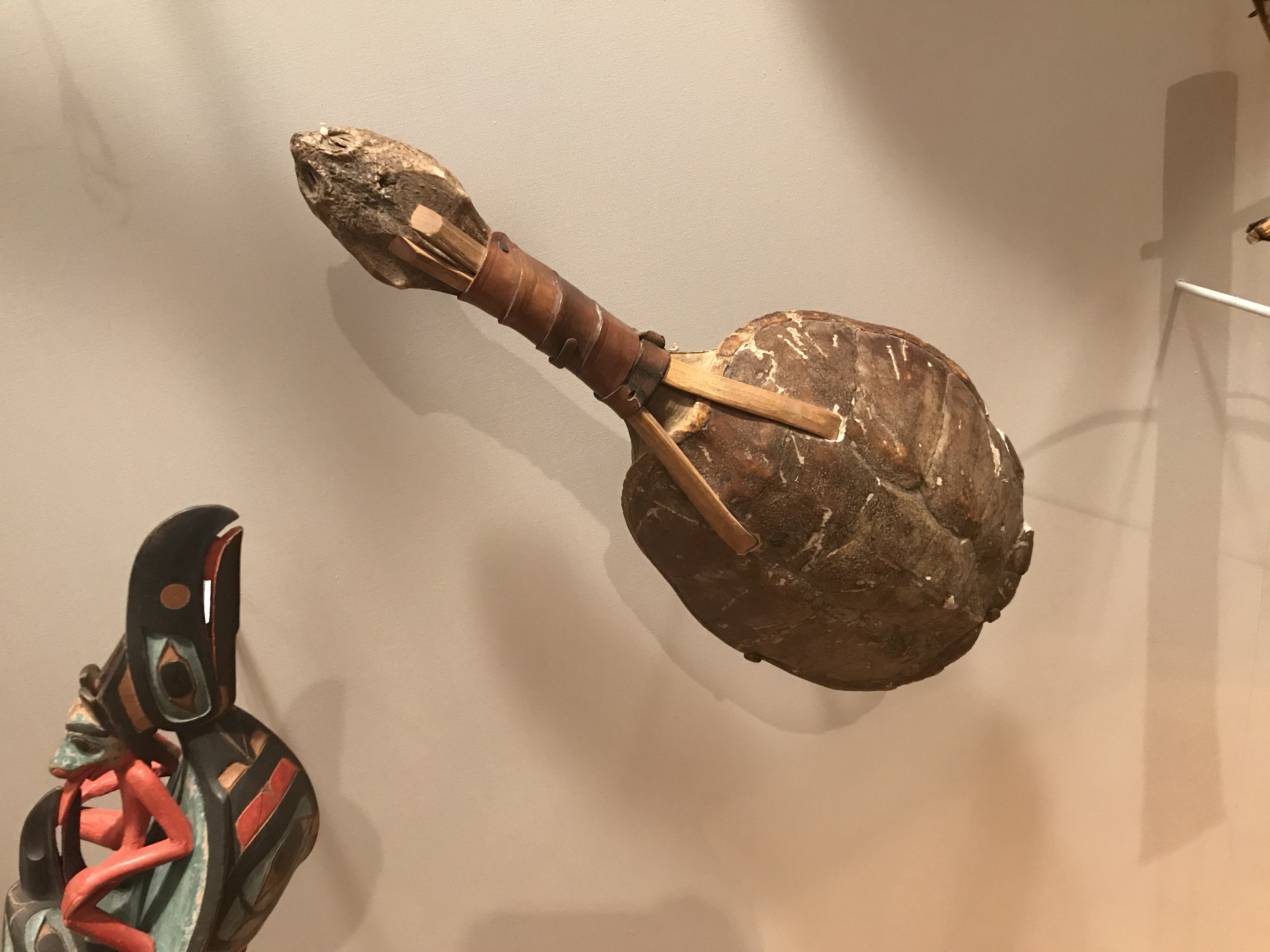
Kanyahte Ka'nowa
The kanyahte ka'nowa is a Seneca instrument made (obviously) from the shell of a snapping turtle, fastened together with wood and leather, and filled with cherry pits. Both the Seneca and Iroquois used these instruments in dance and healing rituals.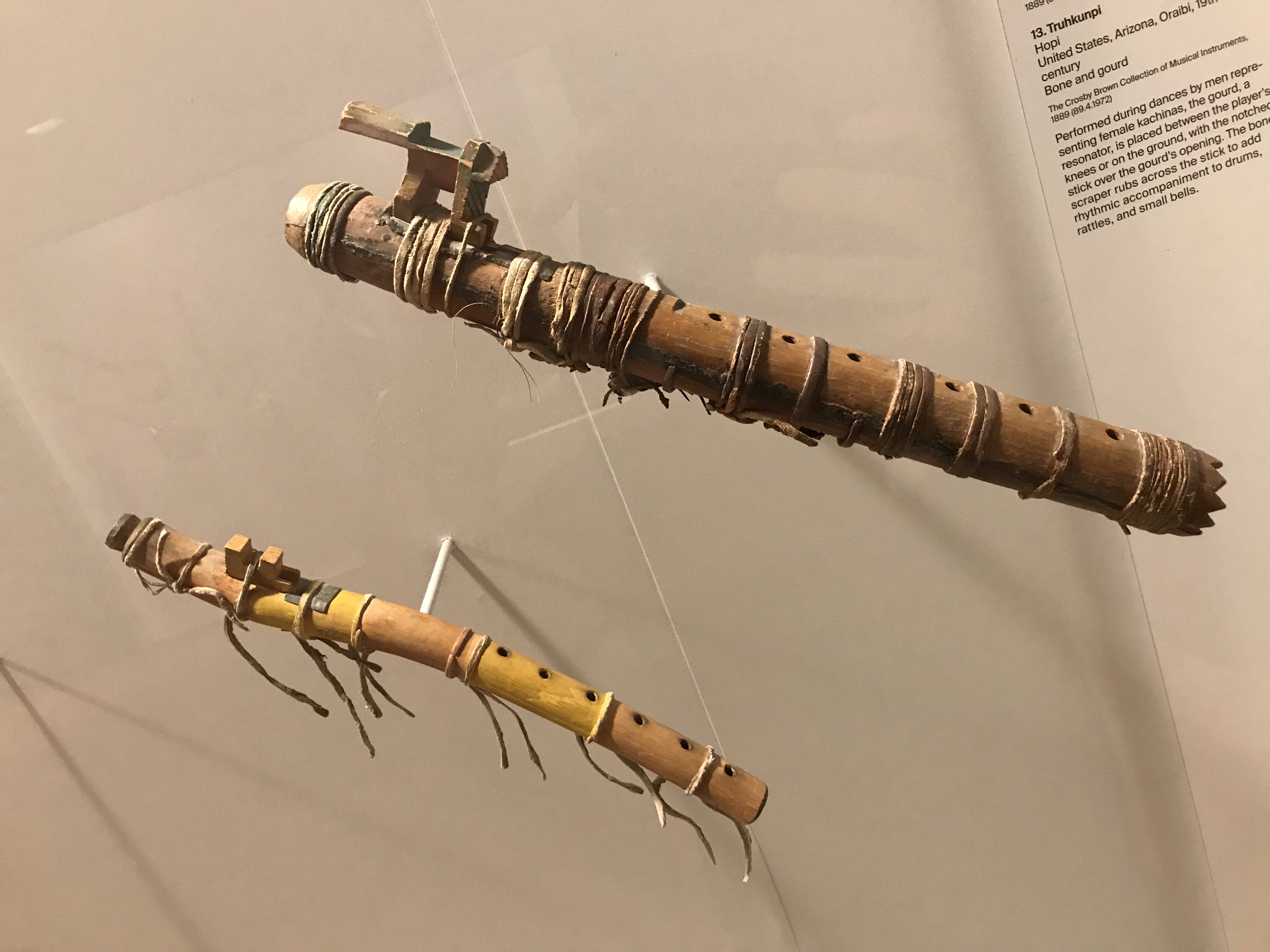
Sul and Siyontanka
The sul is an Apache flute made from yucca wood and tanned leather. The larger siyontanka is similarly constructed and was made by the Chippewa, a Great Lakes tribe often in conflict with the Iroquois.
Junius Brutus Stearns, Public domain, via Wikimedia Commons
The British colonists (including a young lieutenant colonel named George Washington) and their allies far outnumbered the French and theirs, and the war was a decisive British victory. Canada and the lands between the Appalachian Mountains and Mississippi River were ceded to Britain, and France transferred the rest of Louisiana to Spain. Though victorious, many of the American colonists were not happy with how the British government ran the war, and even less happy with their decision to make the colonists cover most of its cost. This led to a period of escalating tension between Britain's American colonies and the government in London.
